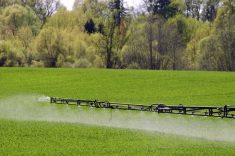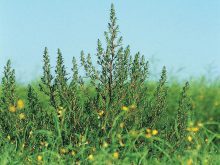Chicago | Reuters — Monsanto put on hold the launch of a seed treatment on Wednesday, following reports it causes rashes on people, in the latest instance of complaints about a company product that was approved by U.S. environmental regulators.
Monsanto froze plans for commercial sales of the product called NemaStrike, which can protect corn, soybeans and cotton from worms that reduce yields. The company said it conducted three years of field tests across the U.S. in preparation for a full launch and that more than 400 people used it this year as part of a trial.
Read Also

Entomologist tests trap crops and marigolds to repel flea beetles at an Ag in Motion
An Agriculture Canada entomologist is experimenting with trap crops and marigolds at an Ag in Motion demonstration cropplot
The delayed launch of what Monsanto calls a blockbuster product is another setback for the company, which is already battling to keep a new version of a herbicide on the market in the face of complaints that it damaged millions of acres of crops this summer.
“There have been limited cases of skin irritation, including rashes, that appear to be associated with the handling and application of this seed treatment product,” Brian Naber, U.S. commercial operations lead for Monsanto, said in a letter to customers about NemaStrike.
Some users who suffered problems may not have followed instructions to wear protective equipment, such as gloves, company spokeswoman Christi Dixon said.
The company expected NemaStrike to launch across up to eight million U.S. crop acres in fiscal year 2018, CEO Hugh Grant said on a conference call last month. The product was “priced at a premium that reflects its consistent yield protection” against worms known as nematodes, he said.
The U.S. Environmental Protection Agency (EPA) did extensive evaluations of the product before approving it for use, according to Monsanto, which has described NemaStrike as “blockbuster technology.” The agency could not immediately be reached for comment after hours on Wednesday.
“The technology is effective and can be used safely when following label instructions,” Monsanto said.
Health Canada’s Pest Management Regulatory Agency (PMRA) in July proposed full Canadian registration for the NemaStrike technology and its active ingredient, tioxazafen. A public comment period on the proposal closed this summer and registration is still pending.
In tests on lab animals, PMRA said in July, the active ingredient was “minimally irritating to the eyes and non-irritating to the skin, and did not cause an allergic skin reaction.”
The final product, meanwhile, was found to be “slightly irritating to the skin (and) not irritating to the eyes, and did not cause an allergic skin reaction,” the agency said.
The EPA last year approved use of Monsanto’s new dicamba herbicide on crops during the summer growing season.
Problems have also emerged with that herbicide since the agency’s approval. Farmers have complained it evaporates and drifts from where it is applied, causing damage to crops that cannot resist it.
Monsanto, which is being acquired by Bayer for US$63.5 billion, has said its dicamba herbicide is safe when applied properly and that U.S. farmers failed to follow label instructions.
— Tom Polansek reports on agriculture and agribusiness for Reuters from Chicago. Includes files from AGCanada.com Network staff.




















